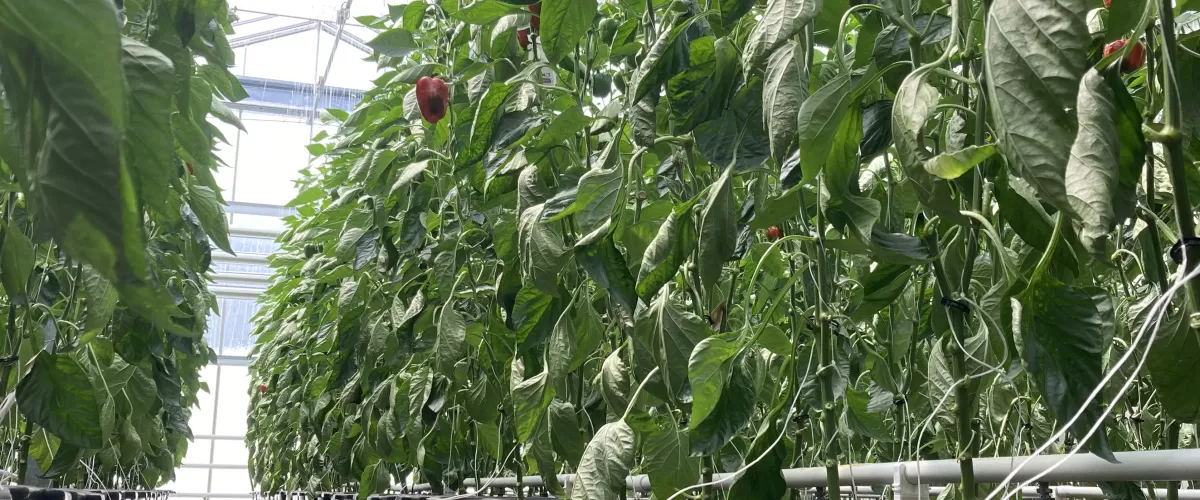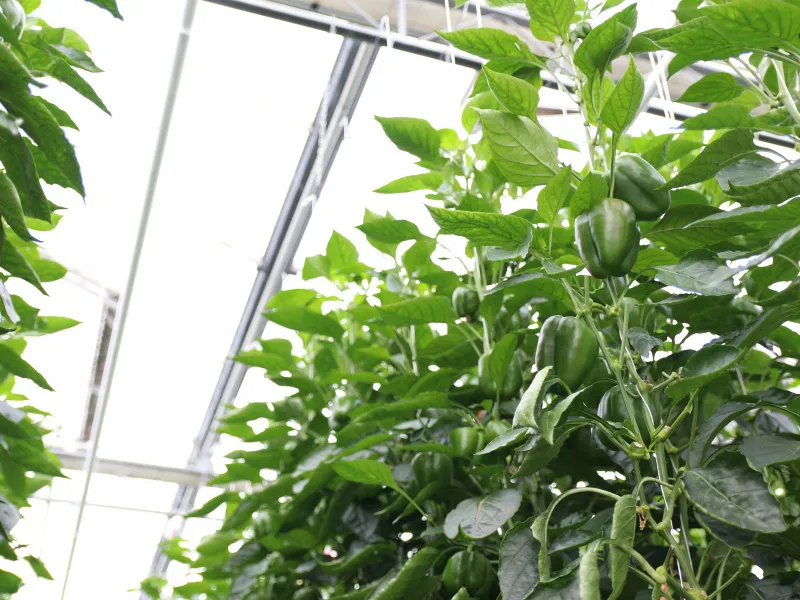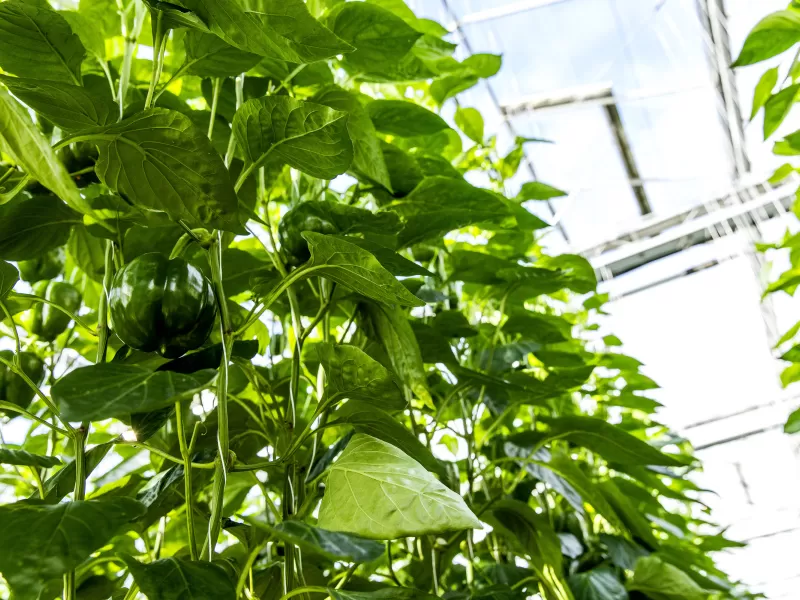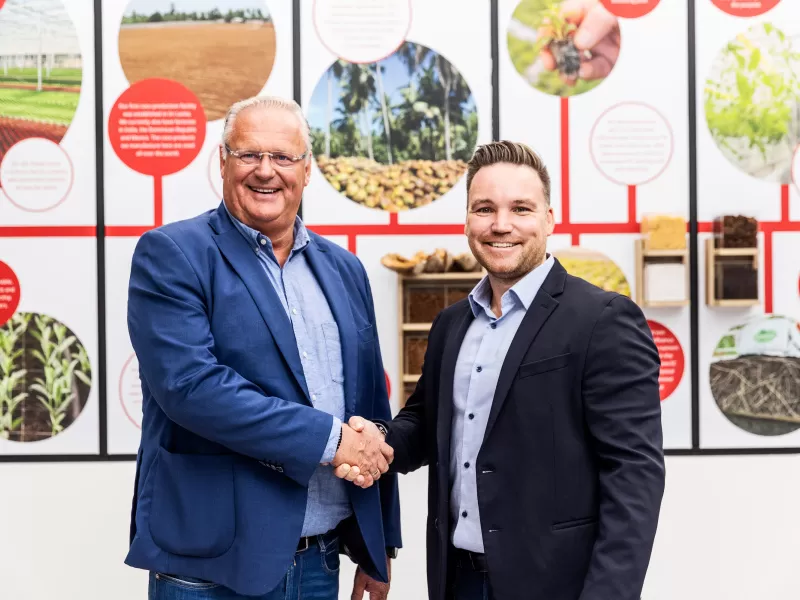Growing in troughs
During this trial in the greenhouse, the sweet peppers were grown in troughs containing 20 litres of substrate per plant. The coco substrate was pre-mixed with organic fertilisers and supplemented with compost. Organic nutrients were added in the form of a top dressing during cultivation and any deficiencies were supplemented using our organic nutrition solution from the bioreactor.
In this trial design, the majority of the minerals were released by the soil life in the substrate. The great thing about this system is that the substrate does all the work and is comparable to soil-based cultivation. However, the main benefit of growing in troughs is the lower risk of soil-borne diseases, which eliminates the need for crop rotation.
Trial progress
The trial got off to a difficult start due to the dark conditions in January 2022. The release of nutrients for the plants was slightly delayed, so the EC was increased a little for two irrigation cycles. The soil life had not developed sufficiently at that moment to meet the nitrogen demand of the plants. After this single corrective measure, there were no further corrections and the (four-weekly) top dressing schedule was applied.
The sombre weather at the start was followed by wonderful spring conditions, so the trial progressed and developed very well. Insight into the availability of nutrients in the plants was gained through plant sap analyses. Soil and water samples were used to monitor the elements released for uptake by the roots. Partly thanks to the use of biological pest control, no pests infected the crops.
Conclusion
With yields of more than 25 kg/m2, we exceeded our production target. This clearly demonstrates the suitability of this cultivation concept for growing organic crops in soil-free conditions. By controlling the availability of minerals, crop growth and development can be steered. During this trial we found a balance between vegetative growth and fruit set. The larger volume of substrate offers multiple advantages, such as a rich soil life and the possibility to delay an irrigation session during days with low irradiation levels.
The next step
This trial is being repeated this year, reusing the same substrate and further optimising the top dressing schedule. The amount of nutrients released via the irrigation system will also be reduced further. Our objective is to ultimately meet the full nutritional needs of the crop using the substrate.



